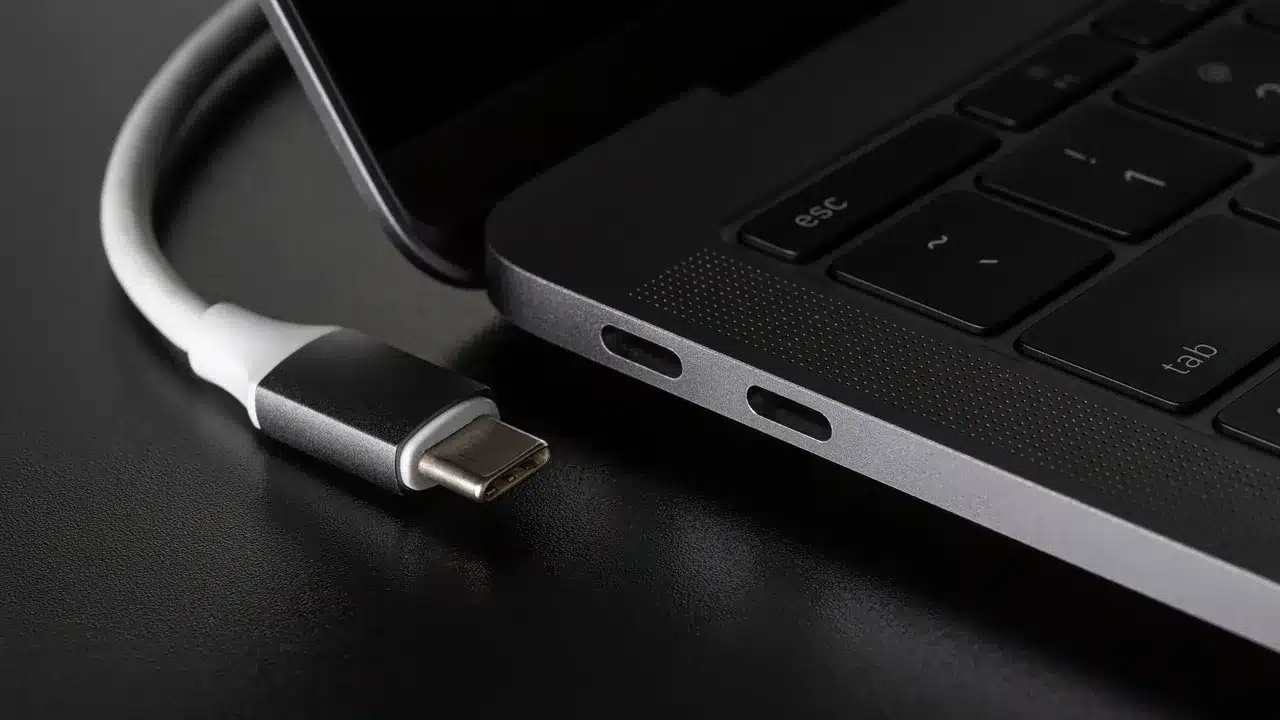Do You Need a High-Powered Laptop?
If you’re mainly using web apps or remoting into the company server, you probably don’t need the most powerful machine out there. A modern laptop with an Intel Core i5 or Ryzen 5 processor, 16GB of RAM is usually enough for Zoom meetings, document editing, and light productivity work. However, if your job involves programming, video editing or gaming, go for something with a fast processor and possibly a dedicated GPU.
Quiet Operation Matters
Unlike noisy open-plan offices, home setups are often quiet – which makes fan noise more noticeable. The MacBook Air is a favourite here because it has no fan at all. Unfortunately, fanless Windows laptops are still rare. New Intel and AMD processors can reduce noise but not eliminate it entirely. Unless you need the extra power, avoid overpowered machines that just generate more heat, noise, and battery drain.
OS Compatibility
MacBooks are well-built and reliable, but they can be tricky for those doing intensive data or coding work. Just something to keep in mind if you’re a developer or analyst. Most businesses run on Windows. If you’re thinking about getting a Mac, be aware the keyboard layout is a bit different, and some industry-specific tools (like engineering or design software) might not be compatible. Fortunately, browser-based apps and tools like Microsoft 365 work just fine across platforms.
Display Size and Quality
If you’re short on space and won’t use an external monitor, get a laptop with a bigger screen – 15.6″ is the sweet spot. These models usually include a number pad, which is handy for accountants and data entry. Don’t just look at size though. A resolution of 1920×1080 or higher keeps text sharp for spreadsheets and coding. Look for at least 400 nits of brightness for working in different lighting conditions. Cheaper laptops often fall short here.
Have a dedicated desk? A smaller laptop plus a good external monitor gives you flexibility and comfort. Plus, it’s much easier to fit in a carry on for travel and still have some space for your clothes.
Keyboard and Input Devices
For frequent typing, laptops like the Dell Latitude, HP EliteBook, and Lenovo ThinkPad shine. They offer great key travel and layout – including well-sized arrow keys. If your desk space allows, an external keyboard is a good upgrade. Just be mindful that clicky mechanical ones may be too loud for video calls. For your mouse, it really comes down to personal preference. Unfortunately, trying before buying is tricky – your best bet is to order a few online and return what doesn’t suit you.
Docking and Monitor Setup
Remember when USB-C ports first showed up and everyone complained? These days, they’re a blessing. For a cleaner desk, plug everything into a docking station or USB-C monitor instead of the laptop directly. This reduces clutter and gives you a single cable for power, video, and data. If your monitor doesn’t have enough ports, a docking hub with USB, Ethernet, and other ports can help.
Pick a laptop with ports on the same side as your dock to avoid messy cables. And make sure it has enough USB, HDMI, or DisplayPort connections to handle your gear. Got older screens? Adapters are your friend.
Webcam and Microphone
Laptop webcams aren’t great. Some Lenovo ThinkPads and MacBooks are exceptions, but generally speaking, they’re average at best. More megapixels doesn’t always mean better quality either. If video calls are a big part of your day, make sure your workspace has good natural light, and avoid sitting with a bright window behind you. External webcams like the Logitech C922 Pro ($100) or Logitech Brio ($250) offer much better quality. And don’t forget a wireless headset with a decent mic – Logitech, Sony, and Apple are all solid picks.
My Work-From-Home Setup
Personally, I use a Lenovo ThinkPad T16 laptop with a 16″ screen. I paid about $2000 for it and upgraded with more RAM and storage. It’s a solid size for working solo. But since I spend most of my time at a desk, I’ve also got a 34″ Dell Ultrawide monitor. Those typically cost $500-600, but you can get a smaller USB-C screen for about $400. My keyboard, mouse, and USB hub all plug into the monitor, which connects to the laptop via one USB-C cable – it even charges the laptop.
Because of some work-specific software, I use Windows. But for travel, I still rely on my older MacBook Air. After four years, it’s still fast, super light, and the battery lasts all day. It even charges via a power bank! And if I need to login into my work laptop, I can easily do that.
Ready for an Upgrade?
If you’re using your laptop all day, every day – invest in a good one. A reliable setup with a good display, fast performance, and a comfortable keyboard makes a huge difference. New laptops that tick all the boxes start around $1500-2000. If you’re on a tighter budget, we offer refurbished, ex-government laptops for about half that – and they still come with a 12-month warranty.
25% Off for EOFY!
Now’s the time: all our laptops are 25% off for EOFY! If you’ve been holding off on upgrading, treat yourself – and reduce your taxable income while you’re at it.






